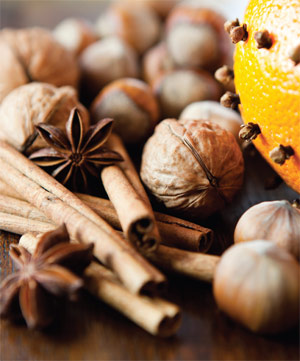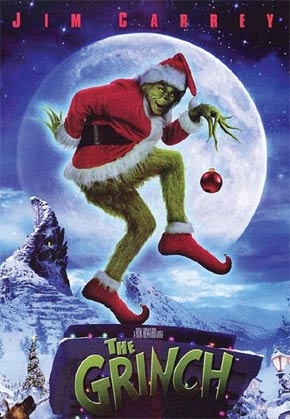
I feel like I’m living in one of those old newsreels, where calendar pages flip furiously to signify the passage of time. Okay, it’s December. I get it.
Like most of you I’ve been spending way too much time in crowded stores—not to mention hours spent shopping on line—but all of this only makes my weekly trips to the farmers’ market even sweeter. While loading up on this month’s cache of farm-fresh fruits and vegetables for entertaining and baking as well as daily sustenance, I often seize the opportunity to cross a few names off my gift list. Call it multi-tasking.
Just as boutiques and small specialty shops offer a more unique and pleasant shopping experience than elbowing your way through a massive department store, the farmers’ market provides a discerning alternative to sprawling supermarkets. At the farmers’ market you are sure to find top-quality locally-grown produce at a fair price…and without the distraction of Muzak, fluorescent lights, climate-controlled air conditioning, and pretty young things with perfume samples. Shopping in the fresh air—what a concept!
The people at Pacific Coast Farmers’ Market Association understand the plight of the harried holiday shopper, and recruit extra vendors to inspire you with tastefully selected seasonal items ideal for giving. The obvious choices are poinsettias and other living plants, holiday wreaths, and just-picked flowers at some of the best prices in town. All the makings for personalized gift bags or baskets are there, too—with products like bottles of California extra-virgin olive oil; plump sun-dried tomatoes; this year’s crop of California walnuts and almonds; golden honey; dried California apricots, raisins, and other popular preserved fruits, as well as glistening jars of jam and fruit preserves. I don’t know about you, but I would welcome any of these gifts over, say, a goofy coffee mug or a tin of imported cookies from the warehouse store.
I would even appreciate a gift-basket of tree-ripened apples or juicy oranges, with or without a big tartan-plaid bow. In simpler times it was considered A Very Big Deal to receive an orange in your Christmas stocking. And who can forget the kinder-gentler Don Corleone, deftly peeling an orange to delight his grandson? Californians tend to take oranges for granted…probably because we don’t need to look far to find an orange tree, if not a full-blown orange grove…but if you’ve ever been disappointed by a dry or flavorless orange, it’s time to reconsider your purchasing power.
Just when the fruit inventory at the farmers’ market appears less plentiful, citrus comes in strong—but beware. Not all oranges are created equal. They may resemble what you see at the supermarket, but the real test is in the taste. Farmers’ market citrus is grown locally, tree-ripened, and delivered directly to market by the growers—usually within 48 hours of harvesting. Fruit destined for supermarkets goes from the tree to a packing house, where it is stored for a while; then to a cooler, where it can be stored for months; then finally trucked an indeterminate number of miles to a grocery store warehouse, where it is stored once again until needed. Also consider that commercially grown oranges are often picked before they have attained optimum sweetness so they can be rushed to stores to meet the demand—and their skins are routinely dyed to cover green spots and give them a brighter, “fresher-looking” hue. Trying to out-smart Mother Nature takes a lot of time and labor….and it is the consumer who ultimately pays for it.
In a month laden with butter and chocolate and whipped cream with a heavy dusting of powdered sugar, a simple yet festive fruit dessert is often appreciated. Poached pears are always a favorite, but here is something that is totally refreshing…and a lot less work.
If you simply cannot resist the temptation to gild the lily, garnish with sprigs of fresh mint—or even a tablespoon or two of very thinly sliced fresh mint leaves.
Chilled Oranges in Marsala Syrup
9 medium California navel oranges
1 cup granulated pure cane sugar
21/2 cups sweet Marsala wine
1/3 cup orange-flavor liqueur, such as Triple Sec
1 or 2 (3-inch) cinnamon sticks
1/3 cup golden raisins or dried cranberries (optional)
Fresh mint (optional)
- Using a vegetable peeler, peel away the skin from 1 orange, leaving the bitter white pith behind. Cut the skin into very thin strips. (Alternatively, remove the skin with a citrus zester.) Squeeze the juice from the orange and set aside.
- In a small saucepan, bring 2 cups of water to a boil. Add the orange peel strips and boil for 3 minutes. Drain in a fine sieve, rinse with cold water, and drain again. Set aside.
- Using a sharp knife, slice the ends from the remaining 8 oranges and cut away all the skin and white pith. Working over a large heatproof bowl to catch the juices, cut the oranges crosswise into 1/4-inch rounds. As you work, place the orange slices in the bowl. Pour in the reserved orange juice from Step 1.
- In a medium saucepan, combine the sugar, Marsala, orange liqueur, and cinnamon stick(s). Bring to a boil over medium heat and cook for about 10 minutes, or until the sugar has dissolved and the mixture has a slightly syrupy consistency. Stir in the strips of orange peel and the raisins, if using.
- Pour the hot syrup over the orange slices. Stir gently to mix with the orange slices and juices in the bowl. Cover and refrigerate at least 2 hours, until well chilled. (Feel free to make these a day in advance, if it’s more convenient.)
- To serve, discard the cinnamon stick(s). Remove the fruit with a slotted spoon and arrange the orange slices overlapping slightly on a rimmed serving platter or in individual shallow dessert bowls, taking care that the zest and raisins are distributed evenly. Drizzle the Marsala syrup over the top and garnish with fresh mint, if desired. Serves 6-8.
Orange you glad to know….
–Contrary to common logic, the orange is not named for its color. The name comes from the Sanskrit naranga, which comes from the Tamil naru, which means fragrant.
–Oranges have long been associated with fertility and good fortune, as the lush evergreen tree can simultaneously produce flowers, fruit, and foliage. The fertility trifecta.
–Although oranges are native to Asia and now grow in warm-weather regions throughout the world, the U.S. is the world’s largest producer.
–Look for citrus that feels heavy for its size…this is a low-tech indicator of juice content. –Since commercially-produced oranges are often dyed, skin color is not an indication of quality.
–Plenty of varieties of sweet oranges abound this month. Valencia is an all-purpose variety best known for its superior juice; navel oranges are conveniently seedless. Exotic blood oranges have stunning ruby-red juice that is lower in acid. Then there are all those loose-skinned relatives from the mandarin branch of the family—like tangerines, clementines, and tangelos. Bitter oranges, like the Seville used for marmalade, are less common in the U.S.
–Almost all of the orange is usable: the flesh, the juice, and the aromatic skin. The spongy white pith is usually discarded because of its bitterness.
–Fresh-squeezed orange juice has a considerably higher Vitamin C content than canned, bottled, or frozen concentrate.
–Oranges will keep up to 2 weeks in the refrigerator.
————————————————————————————————————
The Danville Certified Farmers’ Market, located at Railroad and Prospect, is open every Saturday, rain or shine, from 9 a.m. until 1 p.m. For specific crop information call the Pacific Coast Farmers’ Market Association at 1-800-949-FARM or visit their web site at www.pcfma.com.


